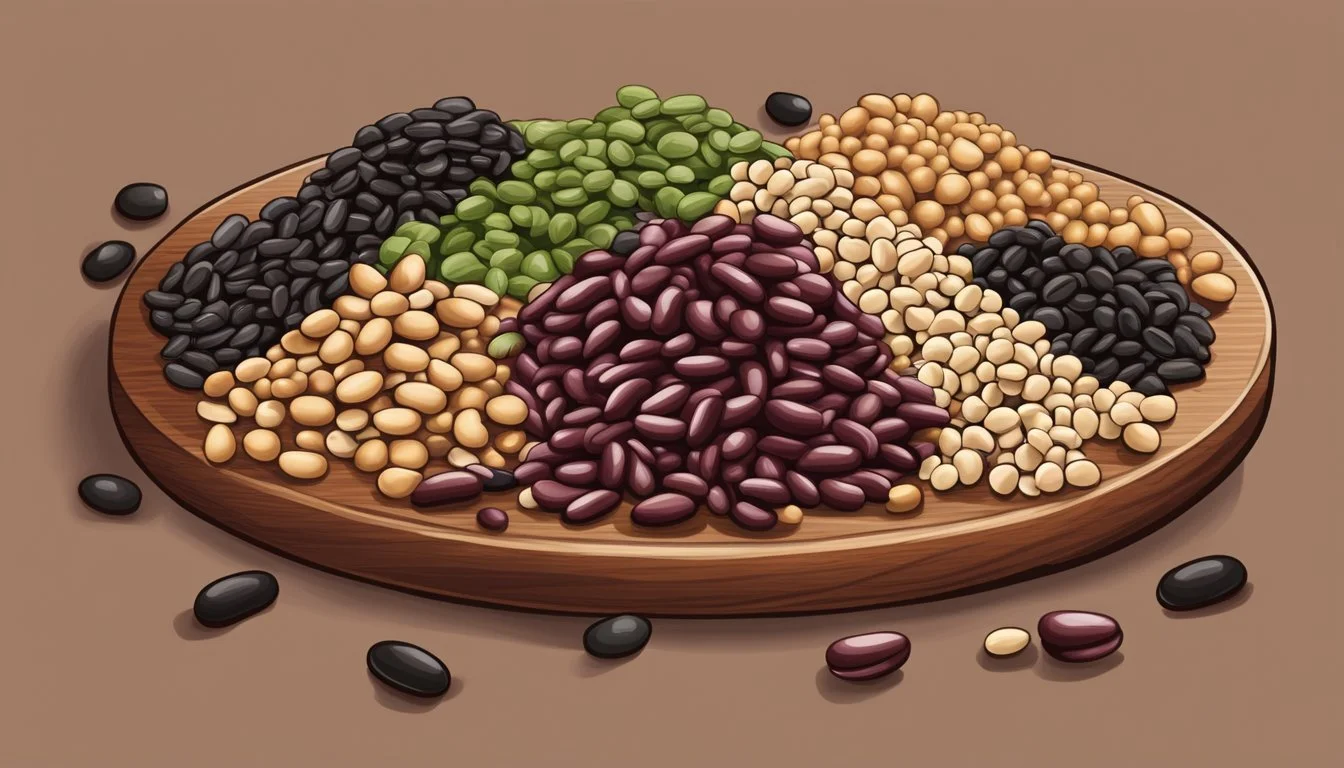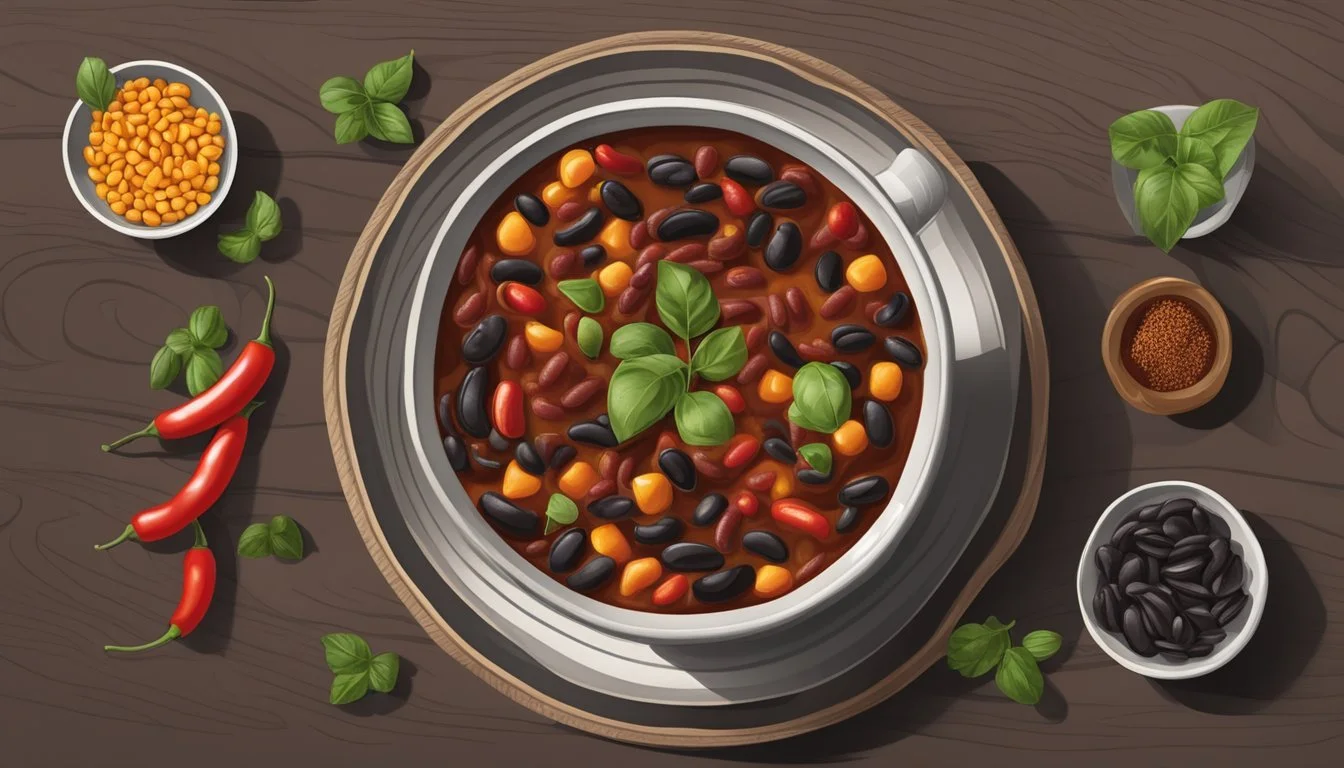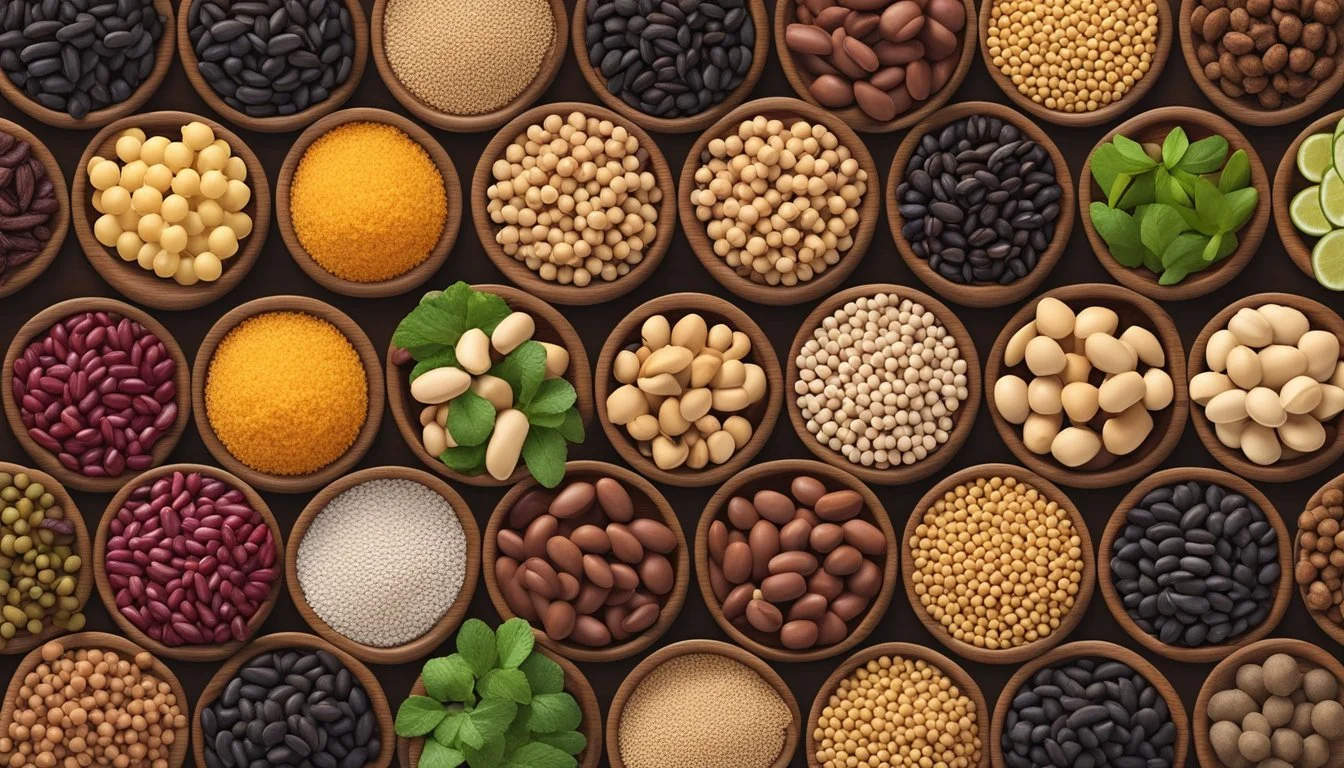Kidney Beans Substitutes
Top Alternatives for Your Recipes
Looking for kidney bean substitutes? You're in luck. Whether you're out of kidney beans or seeking a new twist in your recipes, there are plenty of alternatives that offer similar textures and nutritional benefits. Pinto beans, Great Northern beans, and adzuki beans are some of the best substitutes for kidney beans, offering comparable flavors and versatility in various dishes.
Each alternative brings its own unique flavor profile to the table. Pinto beans, with their rich, nutty flavor, are perfect for soups, stews, and refried beans. Great Northern beans, known for their mild flavor and creamy texture, seamlessly fit in dishes like chili and baked beans. For those looking for something a bit exotic, adzuki beans provide a sweet and nutty taste, making them suitable not just for savory dishes but also for salads and even desserts.
Choosing the right substitute depends on the specific recipe and desired flavor profile. Whether you’re preparing a hearty chili, a fresh salad, or a comforting stew, there's a substitute out there that will enhance your dish without compromising on taste or nutrition. So, next time you’re in the kitchen and find yourself without kidney beans, don't worry—you've got plenty of tasty options to choose from.
Understanding Kidney Beans
Kidney beans are a versatile ingredient known for their significant nutritional benefits and wide range of culinary applications. They play a crucial role in providing essential nutrients while being a popular choice in both vegetarian and meat dishes.
Nutritional Benefits
Kidney beans are a rich source of plant-based protein, providing a substantial amount of protein per serving. They also contain dietary fiber, aiding in digestion and promoting lower cholesterol levels. Additionally, kidney beans are packed with essential nutrients, including iron, magnesium, and potassium.
These legumes offer significant amounts of folate and calcium, crucial for bone health and cellular functions. Another advantage is their complex carbohydrates content, which provides sustained energy. Furthermore, kidney beans contain antioxidants, which help combat oxidative stress. The presence of manganese, phosphorus, and copper further contributes to their health benefits, making them a powerhouse of nutrition.
Culinary Uses
In the kitchen, kidney beans are incredibly versatile. They are a staple in dishes like chili con carne, adding both texture and nutrition. They can be included in soups, stews, and salads to enhance flavor and consistency.
Kidney beans serve as an excellent meat alternative, especially in vegetarian dishes. They are commonly used in baked bean recipes and pair well with rice in dishes like red beans and rice. Whether in side dishes or as a main ingredient, these beans are prized for their ability to absorb flavors and maintain a firm texture during cooking.
Popular Kidney Bean Substitutes
There are various alternatives for kidney beans, each offering different textures and flavors. This guide categorizes substitutes based on their similarities to kidney beans, their distinctive characteristics, and other unique options.
Beans With Similar Texture and Flavor
Pinto Beans: Pinto beans are perfect for soups, stews, and chilis due to their creamy texture and slightly nutty flavor. They provide a similar mouthfeel to kidney beans and blend seamlessly in many dishes.
Black Beans: Black beans have an earthy flavor and meaty texture, making them an excellent stand-in for kidney beans. They're ideal for soups, salads, and Latin American cuisines.
Cannellini Beans: Also known as white kidney beans, cannellini beans have a smooth texture and mild flavor. They work well in Italian dishes, soups, and casseroles.
Beans With Distinctive Flavors and Textures
Adzuki Beans: Adzuki beans are small, sweet, and nutty. These beans are commonly found in East Asian dishes and can be used in everything from salads to desserts. They are especially high in fiber and protein.
Lima Beans: With a buttery texture and slight sweetness, lima beans are unique substitutes for kidney beans. They can enhance the flavor profile of soups, stews, and casseroles.
Cranberry Beans: Known for their creamy texture and mild flavor, cranberry beans are versatile and work well in various dishes. They're especially popular in Italian cuisine.
Other Substitutes and Alternatives
Chickpeas/Garbanzo Beans: Chickpeas have a firm texture and nutty taste. They're great for soups, stews, and salads, and can also be mashed into spreads like hummus.
Lentils: Lentils, available in various colors, are quick-cooking and highly nutritious. They can replace kidney beans in soups and stews and provide a nutty flavor.
Soybeans: High in protein and versatile, soybeans can replace kidney beans in many recipes. They work well in soups, stews, and Asian dishes.
Pigeon Peas: Often used in Caribbean and Indian cuisines, pigeon peas have a slightly nutty flavor and firm texture, making them a good substitute in hearty dishes.
Incorporating these substitutes can diversify your meals while maintaining nutritional value and satisfying textures.
Incorporating Substitutes into Specific Dishes
Finding the right substitute for kidney beans can help maintain the desired texture and flavor of various dishes. This guide explores how to incorporate different bean substitutes into soups, stews, salads, side dishes, and traditional recipes.
Substitutes for Soups and Stews
In hearty soups and stews, Great Northern Beans and Pinto Beans are excellent substitutes for kidney beans. Great Northern Beans offer a creamy texture and mild flavor, blending seamlessly with ingredients like onions, garlic, and rosemary. Pinto Beans add a rich, nutty flavor and smooth texture, making them ideal for dishes like chili con carne and vegetarian chili. Both substitutes maintain the integrity of the dish while complementing the spices and other ingredients.
Substitutes for Salads and Side Dishes
For salads and side dishes, Adzuki Beans and Canned Red Beans shine as kidney bean substitutes. Adzuki Beans provide a sweet, nutty flavor, perfect for bean salads or mixed greens with a touch of cilantro and lime. Their firmer texture withstands dressings and marinades well. Canned Red Beans, already cooked and tender, simplify preparation for quick side dishes. Their earthy flavor pairs well with bell peppers, tomatoes, and spices, adding depth to the dish without overpowering it.
Substitutes in Traditional Recipes
Substitutes play an essential role in traditional recipes like burritos, tacos, refried beans, and hummus. Pinto Beans are a staple in Mexican cuisine, offering a smooth texture when mashed or pureed, perfect for refried beans. Great Northern Beans work well in baked beans and hummus, where their mild sweetness and buttery texture complement the dish's richness. Adzuki Beans add a unique twist to traditional recipes, providing a slight sweetness that enhances the umami flavor, especially when paired with mushrooms and tomatoes.
Health and Dietary Considerations
Choosing substitutes for kidney beans not only affects the taste and texture of your dishes but also impacts their nutritional profile and suitability for various dietary needs. Key factors to consider include weight loss benefits, nutritional value, and accommodating allergies or dietary restrictions.
Weight Loss and Nutrition
Substituting kidney beans with other legumes can provide similar nutritional benefits. For instance, black beans are an excellent source of fiber and protein, which help in promoting a feeling of fullness and supporting muscle maintenance. Thus, they can be beneficial for weight loss.
Adzuki beans, known for their sweet and nutty flavor, offer high fiber content and protein levels. When integrated into diets, these beans help with appetite control and digestion. Pinto beans also share similar attributes, providing a rich, nutty flavor while contributing to daily fiber and protein intake.
Anasazi beans, with their naturally sweet taste, are another healthy option. Though slightly sweeter, they retain the fiber and protein benefits essential for nutritional balance and assisting weight loss goals.
Allergies and Dietary Restrictions
For those with gluten sensitivities or celiac disease, beans are naturally gluten-free, making them safe and nutritious alternatives. Substitutes like lima beans and adzuki beans can be significant for those avoiding gluten.
Individuals with specific legume allergies need to choose substitutes carefully. For example, black-eyed peas and other lesser-known beans might serve as alternatives, providing essential nutrients and avoiding allergic reactions. Moreover, lima beans are also a suitable substitute for people with certain bean allergies, offering a mild flavor and smooth texture.
Vegetarians and vegans can use these bean substitutes as a meat alternative, contributing to their protein intake without compromising their dietary restrictions. This inclusion ensures that the diet remains balanced and nutritious, catering to both health requirements and culinary preferences.
Cultural Significance of Kidney Bean Substitutes
Kidney bean substitutes play important roles in various global cuisines. Diverse cultures incorporate these alternatives in traditional dishes, reflecting local tastes and ingredients.
Substitutes in Latin American Cuisine
In Latin American cuisine, pinto beans are a common substitute for kidney beans. These small, pinkish-brown beans are widely used, particularly in Mexican dishes. They provide a rich, nutty flavor and smooth texture in soups, stews, and refried beans.
Another significant substitute is the black bean. Popular in many Latin American and Caribbean dishes, black beans are prized for their dense, meaty texture. They feature prominently in black bean soup, feijoada (Brazilian black bean stew), and gallo pinto (a traditional dish in Central America).
Substitutes in European Dishes
Cannellini beans are a staple in Italian cuisine. These white beans are often used in place of kidney beans in dishes such as minestrone and pasta e fagioli. Known for their creamy texture, cannellini beans blend well with tomatoes, garlic, and olive oil.
In many parts of Europe, navy beans serve as an alternative to kidney beans. Navy beans are smaller and slightly milder, making them perfect for bean soups and cassoulet. Their delicate flavor allows them to complement more robust ingredients like pork and sausages.
Substitutes in South and Central American Recipes
In South and Central America, pigeon beans (also known as gandules or toor dal) are an important substitute. These beans are integral to dishes such as arroz con gandules in Puerto Rico and feijão de corda in Brazil. Pigeon beans hold their shape well during cooking and have a rich, earthy flavor.
Anasazi beans, cultivated by American Indians, are another notable substitute. They are sweet and used in recipes like chilies and stews. Their historical significance and unique taste make them a popular choice in traditional South and Central American dishes.





